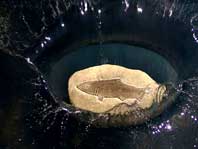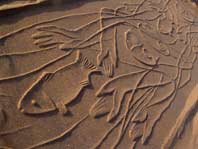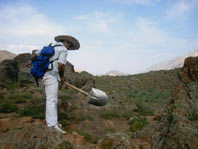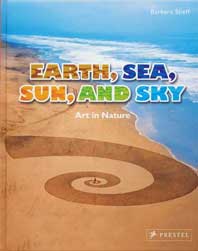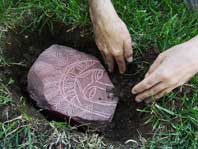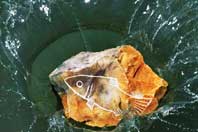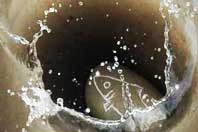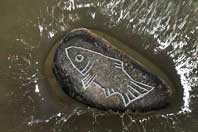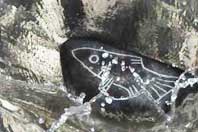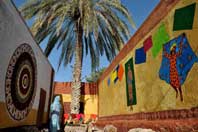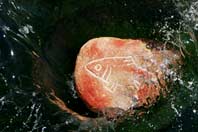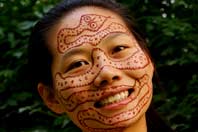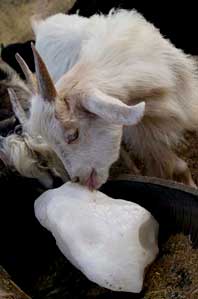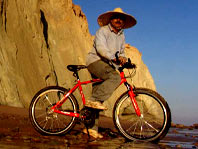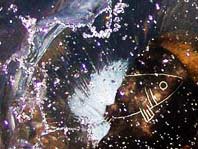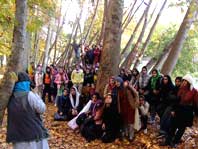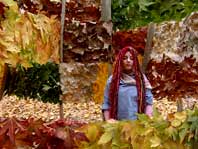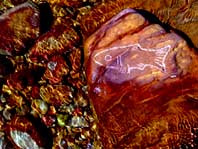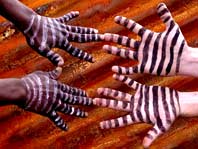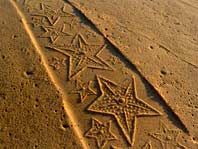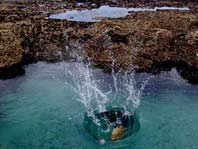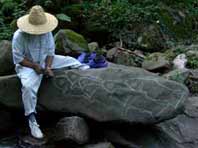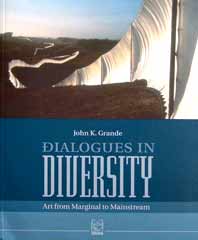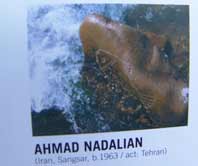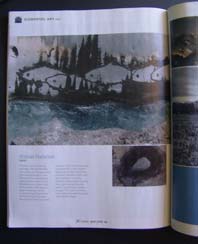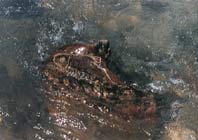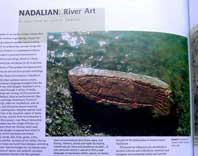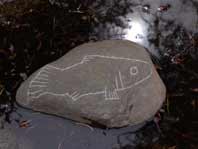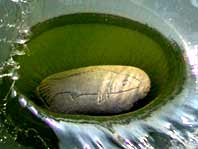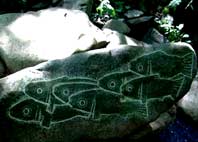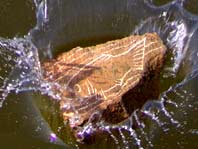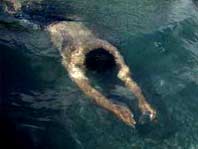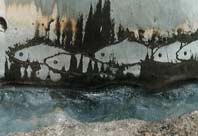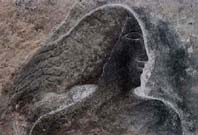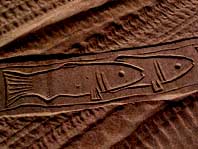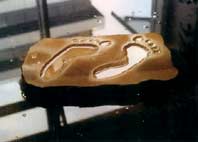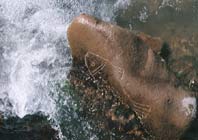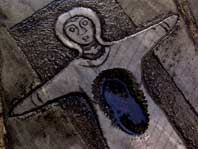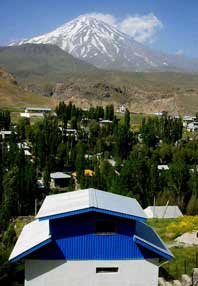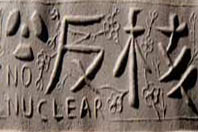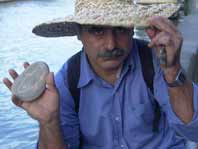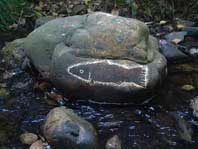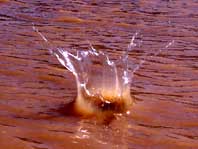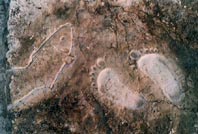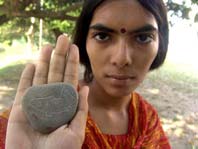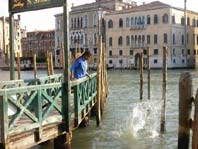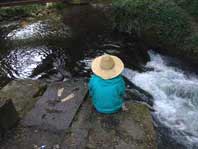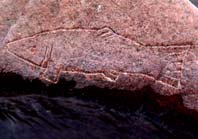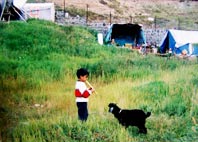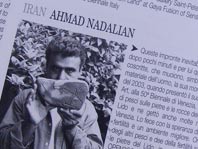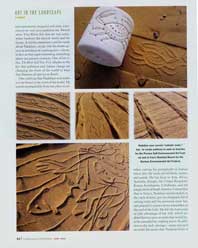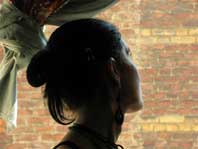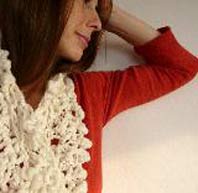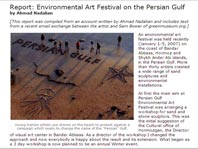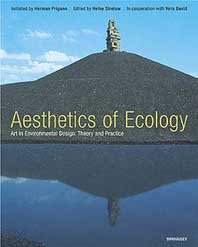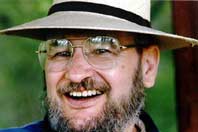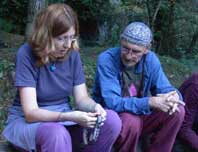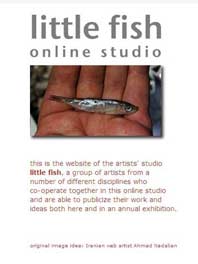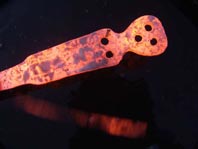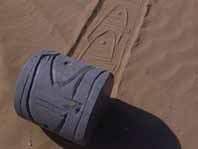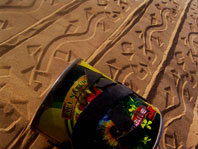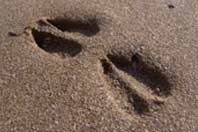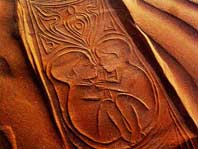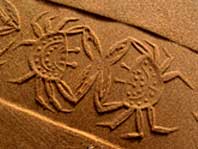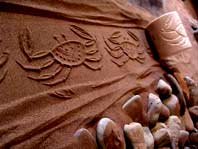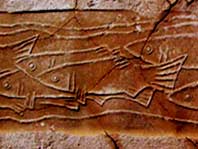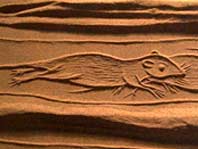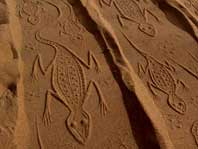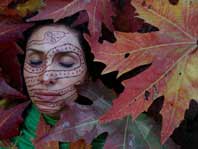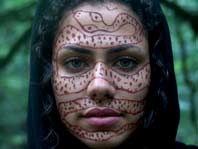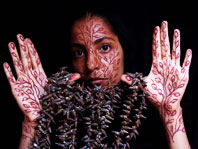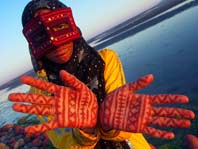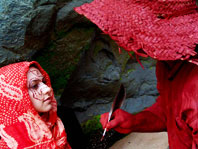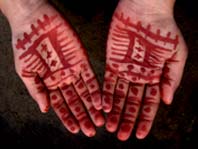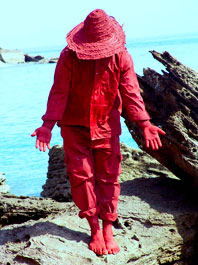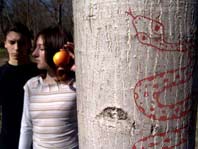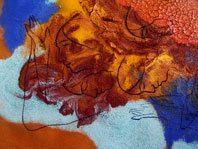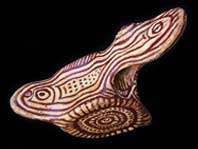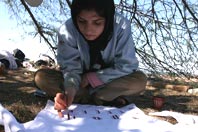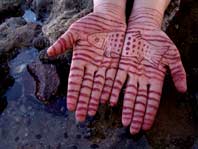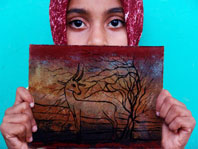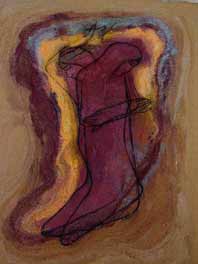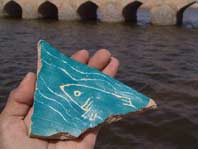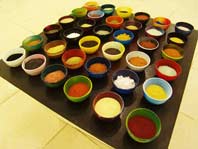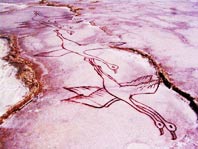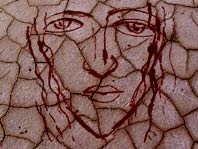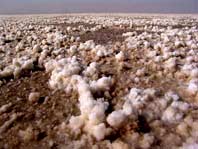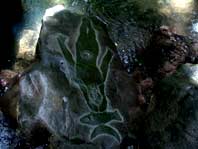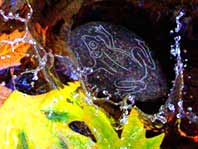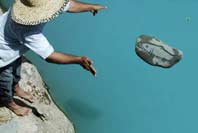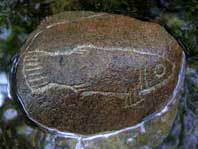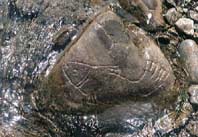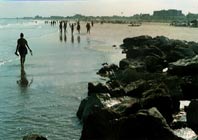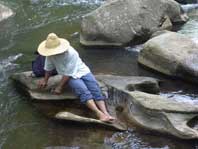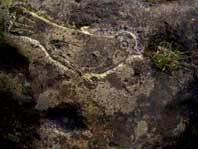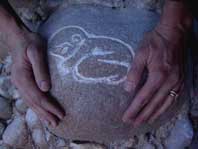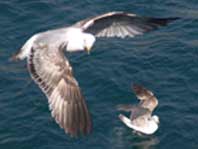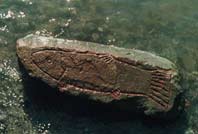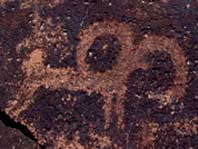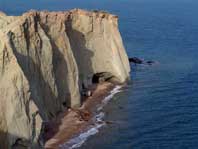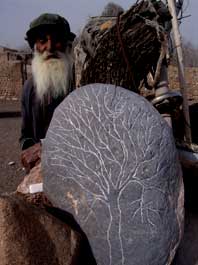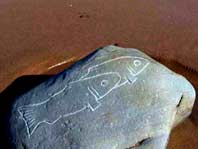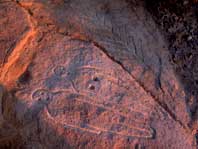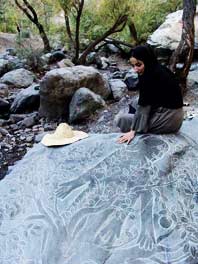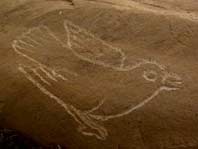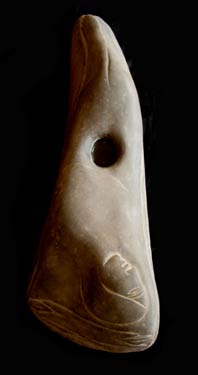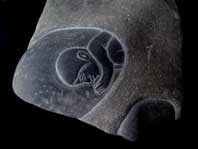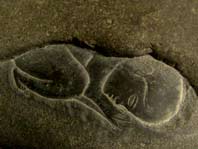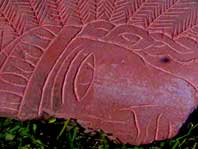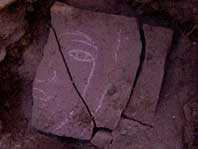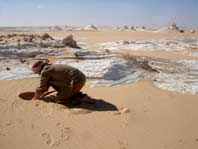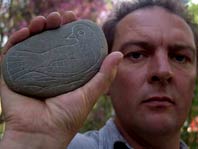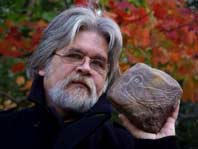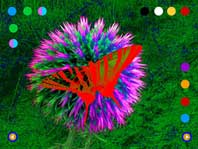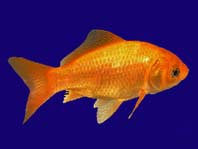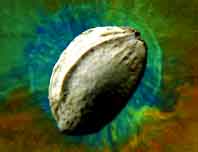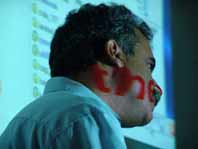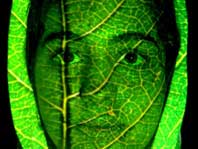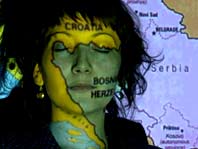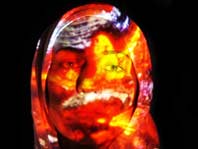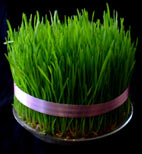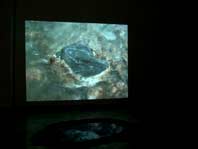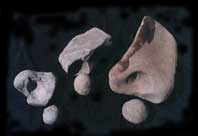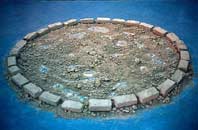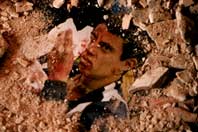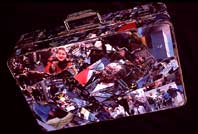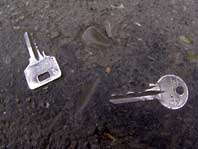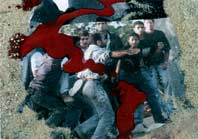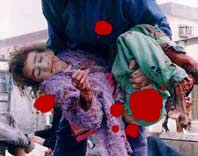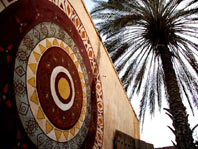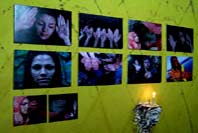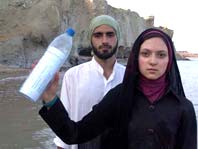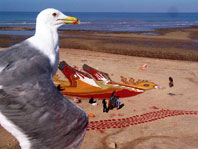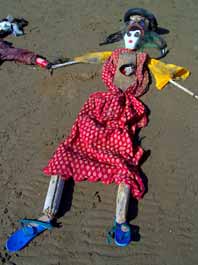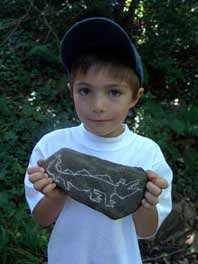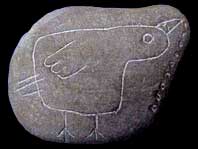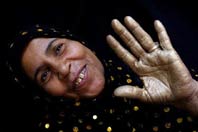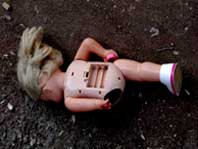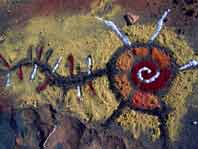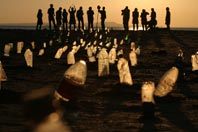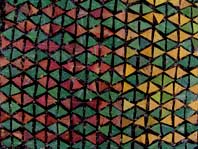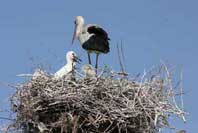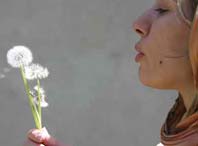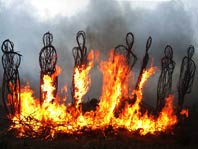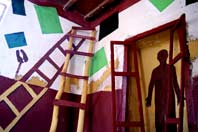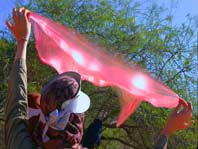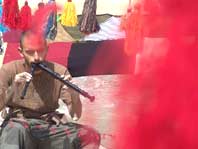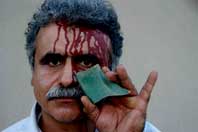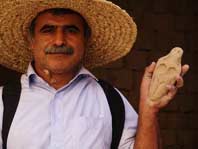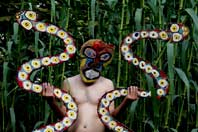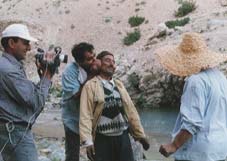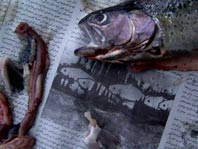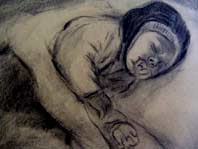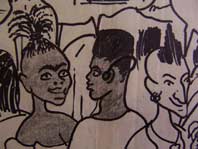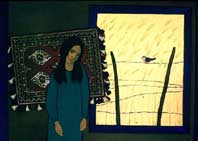|
You see the Old Web Site Of Ahmad Nadalian For
New Web site
شما در حال دیدن سایت قدیمی احمد نادعلیان هستید
Click The Followings Adresses
برای دیدن سایت های جدید لینک های زیر را کلیک
کنید
www.RiverArt.net
and
www.nadalian.com
برای دیدن صفحه فارسی
اینجا را کلیک کنید
Persian
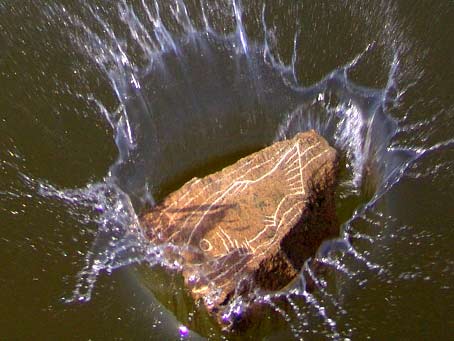
Water water everywhere and the boards did shrink;
water water everywhere, and not a drop to drink...
Samuel Taylor Coleridge "The rhyme of the ancient mariner"
RiverArt.Net
introduces works by Ahmad Nadalian who is internationally known as one of the most active
environmental artists. He has been supported and sponsored by many
different organizations in many countries throughout the world, where he
has performed numerous environmental art projects.
Now most of
Nadalian works are scattered across the earth. His environmental
art projects, include the carving of rocks that can be found in
more than seventy countries such as
Italy, USA, England, Germany, Spain, France,
China, South Korea, Hungary, Slovakia, Netherlands, Greece, Russia, Uzbekistan,
Tajikistan, Bangladesh, Finland, Lebanon, Syria, Azerbaijan,
Sweden, Denmark, United Arab Emirates, Qatar, Kuwait, Turkey,
Switzerland, Serbia,
South Africa, Austria, Cyprus,
Georgia, Japan, Malaysia, India, Brazil, Argentina, Paraguay,
Ecuador, Armenia, Estonia, Latvia, Lithuania, Poland, Czech
Republic, Thailand, Portugal, Morocco,
Tunisia ...and his
homeland Iran
.
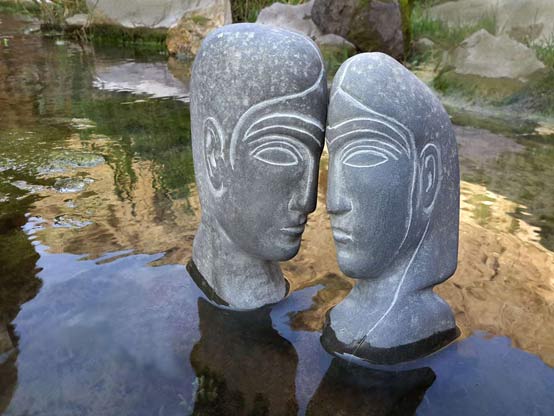
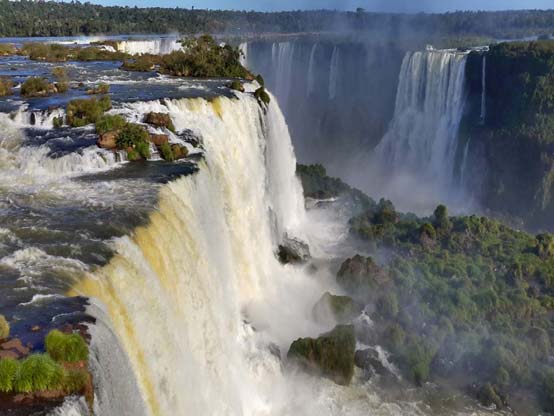
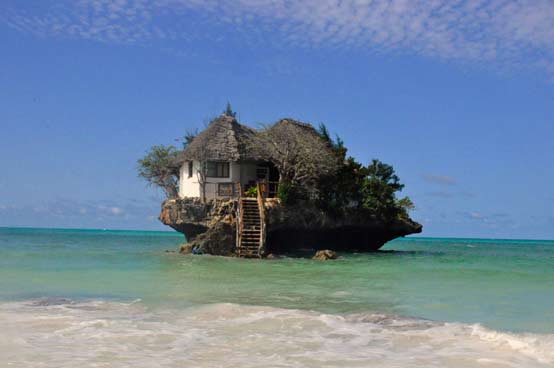
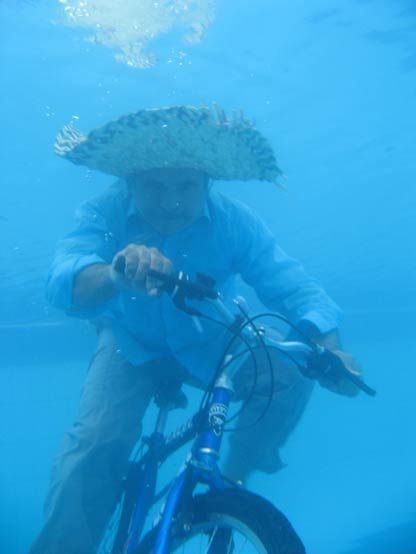
I took my
bicycle
to
underwater.
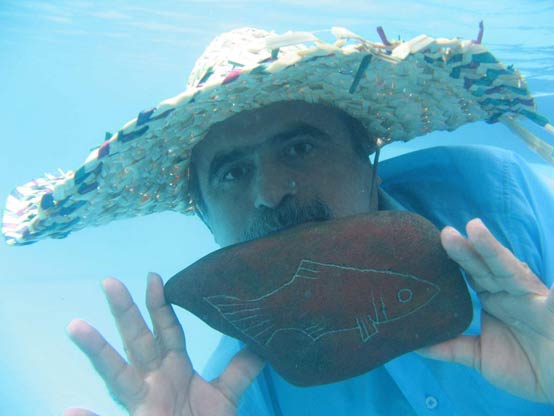

If for your
presentation and researches you need larger images see this
link
http://www.riverart.net/nadalian/largeimages
Also a number of
small carved stones carved by Nadalian have been tossed into
rivers or buried under the earth by himself or occasionally by
travelers who bury them in different countries such as: Australia,
Burkina Faso, Chad, Egypt, Japan, India, Brazil, Morocco, South
Korea, Ireland, Brazil, Like archaeological artifacts, most of
these stones are likely to remain hidden for generations.
This project named "Hidden Treasure”,as An art exhibition for next
millenniums".
He leapt to fame
in the West, after representing his River Art project in the 50th
Biennale of Venice. Then he was invited to many countries by
different art organizations for promoting his message.
Nadalian Works in
Books and Catalogues
A number of
books, catalogues, and magazines of contemporary art include
Nadalian’s works. He has been introduced as one of the world's
leading environmental artists by Edward Lucie-Smith in his book
Art Tomorrow.
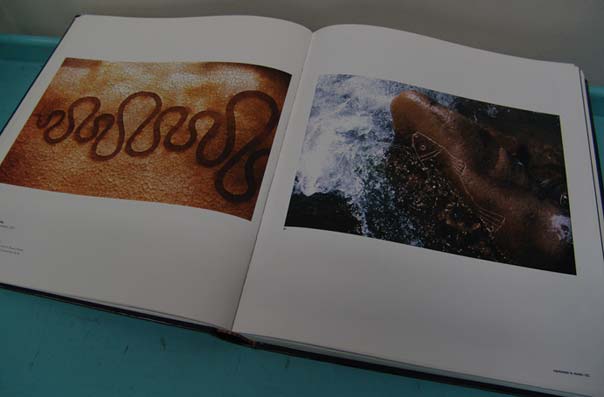
About Nadalian works he say: Various symbols are incised on boulders- chiefly fish, which for the
artist are emblems of the human soul, thirsty to experience life, but also
human figures, emblems of hands and feet, and images of birds, goats,
snakes and crabs. While some of these engravings are on a large scale,
others are carved on small pebbles, and are left for casual visitors to
find. Nadalian regards the discoveries these visitors make as acts of
collaboration with the artist.
Edward Lucie-Smith
John K. Grande
in his book
Dialogue in Diversity
focused on Land artists and introduced Nadalian and says:
"Nadalian is an Iranian sculptor whose life's work involves engendering
respect for living creatures and the natural environment. To achieve
this, besides living with nature himself, he established sculpture
grounds in a peaceful environment in natural surroundings. Water is a
living element that contributes to his sculptures, and many of the
symbols he engraves and sculpts are derived from ancient mythology and
the rituals of pre-Islamic civilizations."
John
K. Grande.
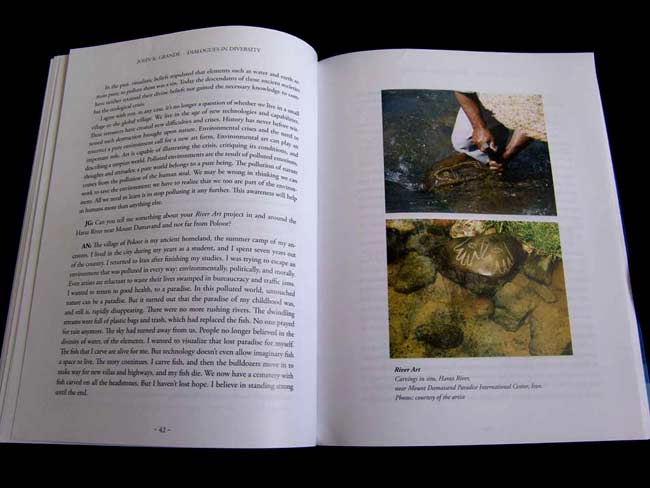
Robert C. Morgan in a
note about Nadalian says: Ahmad Nadalian’s work is like a synaptical
charge between the Paleolithic cave art and Ancient Persia. He
works with directly the earth, primarily in sand and stones on the
shores or shallow pools of rivers, ponds, and streams...
French artist
Yves Klein felt that art was somewhere between the ancient world and the
future. A similar statement could be made about Nadalian, except
that his forms appear as simulacra of a pre-linguistic culture, in fact,
as true signs reiterating something about our present moment. One of his
titles is “The River Still Has Fish” – meaning that, in contrast to
Paleolithic times, the threat of pollution is changing the rivers of the
world in a way that is threatening to all species on Earth. One could say that
Nadalian’s real studios are the rivers of the world... Nadalian’s work is a kind of a combined
Earth and Process art, at least in Western terms. Yet he is also within
the context of Postmodernism by returning us to an era when language did
not exist other than as signs, an era when there were no urban monuments
and no public art in city squares. There was only the earth on which we
trod and the satisfaction of knowing what had to be done each day.
Landscape
Architecture: 6/2008
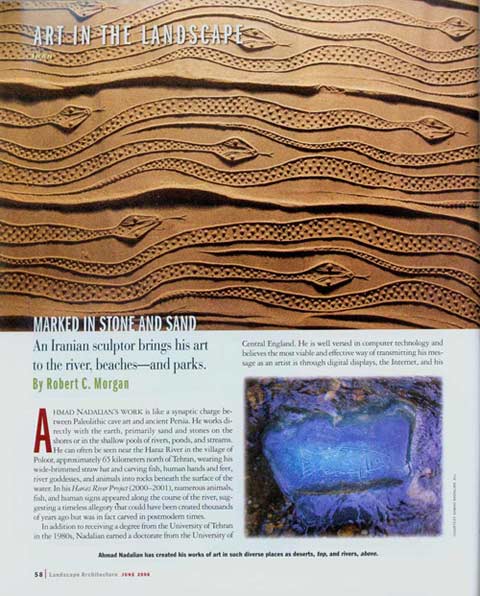
Barbara
Stieff
describes Nadalian's work as
follow:
For the Persian artist Ahmad Nadalian,
fish are symbols of human soul. They are thirsty for life. Like a
shaman in earlier times or a good pastor today, Nadlain wants to help
people. He engraves the fish onto stones and then returns them to nature
once again, where they can become vigorous and swim like fish in water.
As part of his art, Ahmad Nadalian
buries his creations all around the world in holes in the ground.
People who observe him doing it may secretly want to retrieve the
"treasure," hoping to find gold and jewels. But at the bottom of
each hole there is a simple stone with a motif carved into it.
These stones are the treasure, though people often do not realize it.
For the carved stones represent the artist's ideas and good wishes for
the whole earth.
Earth, Sea, Sun, And Sky
Art in Nature
Sam Bower
describes Nadalian's work as
follow: By carving simple fish shapes and other forms
onto small stones and river rocks, artist Ahmad Nadalian seeks to
repopulate the spirit of neglected streams and rivers in his native Iran
and around the world and share these treasures with future generations.
Over the past decade the artist has traveled to cities and remote
regions in every continent (with the exception of Antarctica) to work
with children and local residents to create countless treasures which
are then tossed into rivers and buried under the earth, spreading his
message on a scale that few artists have before. Nadalian's "message to contemporary man is to remain
aware of the dangers of environmental disasters and political crises. If
there is any audiences in the future, this work will tell them the story
of life and humanity."... " The universality of Nadalian's
stone images and their ties to his Persian heritage, are part of
their appeal. As natural images with deep historical roots they
are both recognizable and enigmatic. For the artist, "walking
along a riverbank and washing the stones, which he has already
carved, is not only a performance, but also a prayer, a form of
worship, an invocation...
Coming from a land as rich in history as it is in
turmoil, the artist's perspective of the future of our planet is rather
bleak: "Global warming, pollution, wars and crises across the world may
terminate life of most of living creatures including human beings." Art,
for Ahmad Nadalian, is a blessing and a connection to time and place,
and his "only concern is that humanity, at present or in the future, may
be less in harmony with the past, and with the earth and heavens."
Green Museum
Nadalian’s
works in Media
Nadalian's life
and artistic activities in Iran and abroad have been the subjects
of some documentary film by filmmakers such as Mojtaba Mirtahmasb,
Fergus Meiklejohn,
Catherine MacDonald, and Vesta Much. In addition to many TV
reports and interviews focused on Nadalian's environmental works.
Nadalian's life
and artistic activities in Iran and abroad have been the subjects
of documentary films by Mojtaba Mirtahmasb. His environmental
works have also been recorded by
Fergus Meiklejohn, Catherine MacDonald and Vesta Mauch. In addition in
many TV reports and interviews focused on Nadalian's environmental
works.
He was
photographed by German artist Gottfried Junker who collected the
photos of "The most exciting Contemporary Artists (a work of 7
years and much traveling aruond the world).
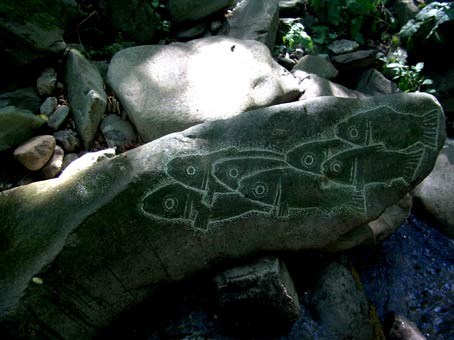
River Art
Project
Nadalian has
traveled widely and moves like a fish transgressing international
borders., leaving graphic messages on all continents but
Antarctica in the form of etched stones, thousands of them, large
and small, on which he has inscribed or painted; fish, crabs,
nautilus spirals, human hands, feet, and goddesses. The works,
which he has named “River Art”, is composed of carved rocks that
have been abandoned at the site where they were created. Various
symbols are incised on boulders; chiefly fish, which for the
artist are emblems of the human soul, thirsty to experience life,
but also human figures, emblems of hands and feet, and images of
birds, goats, snakes, and crabs.
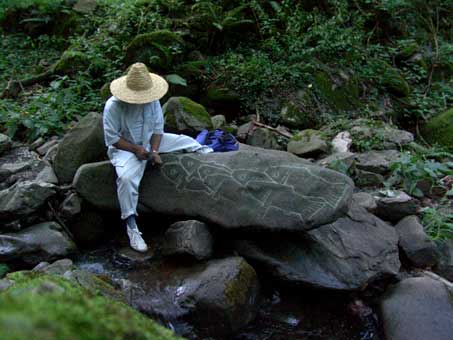
Freed Fish
Over the past
decade the artist has frequently traveled to cities and remote
regions and locations on every continent
and has dropped or cast
many of his stones carved with the image of fish into rivers,
canals, reservoirs and seas.
He captured the moment when his ‘stone fish’ meets the water.
Through this ritual action, his wish is to bring a better
environment, for life and fertility for all mankind.
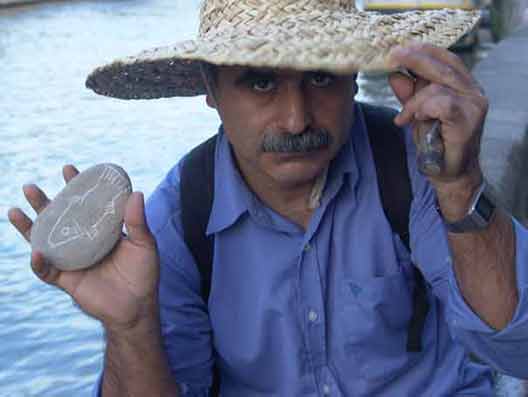
Freed Fish

Pleasure of New
life
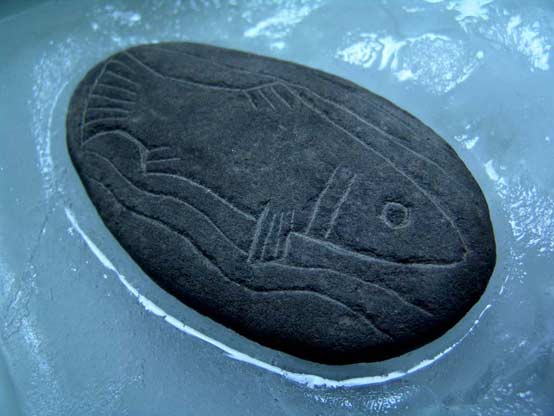
Printed
sand by Cylinder Seal
Inspired by
the ancient example, Nadalian carves large cylinder seals which
are then rolled out onto the sand, along the shore or in desert we
witness images of fish, crabs, snakes, lizards, tortoises, and
scorpions, ... One wants to follow the path of these ancient
animations and fish symbols to see where they might lead us. It
is his dream to increase the living creature who dying due to
global warming and pollution and protect them by his mythological
goddess.
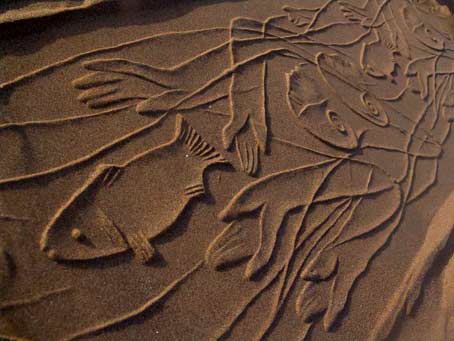
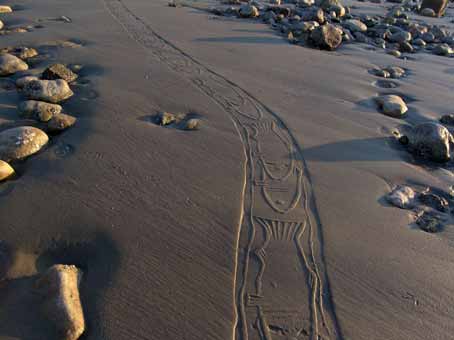
Sand
Prints
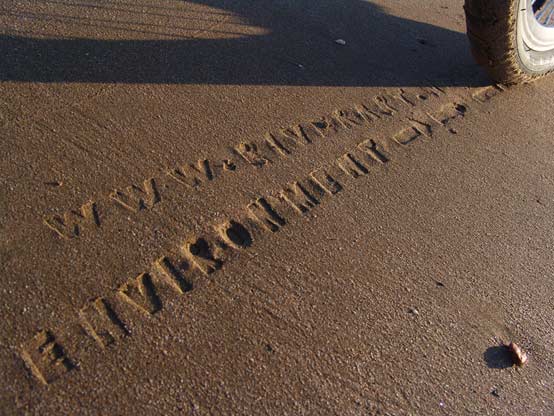
Bicycle Art & Recycle
Art
Hidden
Treasure
During his
frequent travels to different parts of the world,
Nadalian has burried
and hidden
many of his carved stones
in different land
and to create countless treasures. In addition, many artists and
individuals, from different nationalities have carried out and
buried or hidden his carvings in the different places on the
planet. These
mostly show images of fish and human
hand and
foot traces,
and animals.
He
usually documents the process of the burial of his works.

Hidden Treasures
Environmental Art
Project across the Globe
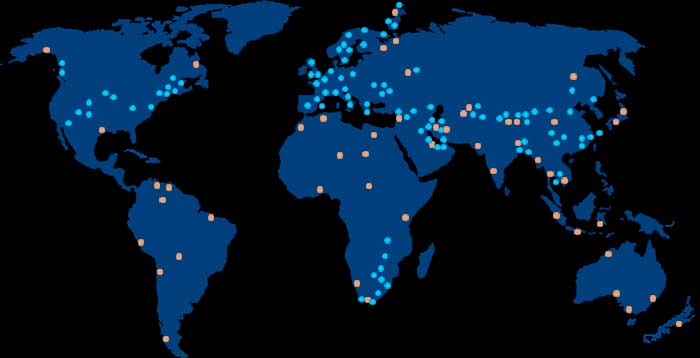
|
This Map shows the locations of Nadalian's Works
around the glob. The blue points show the place where he carved
on the rocks and orange points show the countries in which his carvings
were buried. people and different
travelers carried out and buried his carvings in the earth. This project
named "Hidden
Treasures" |
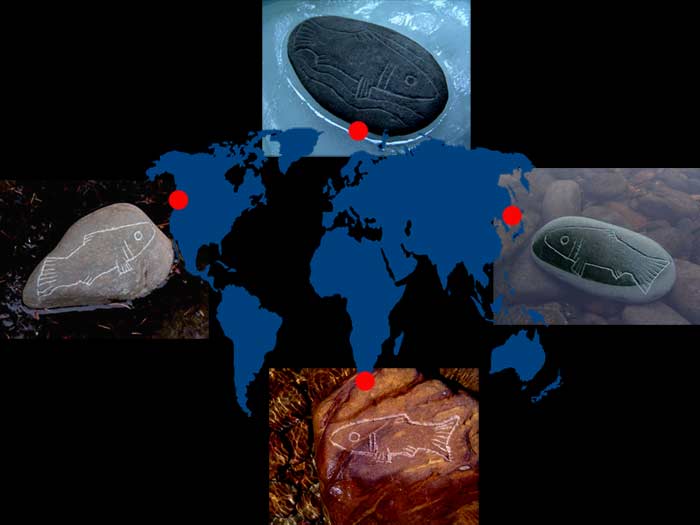
Many
people like hearing stories, and many tell stories- I want to be the
story. My art and life are the same, my life is my art.
In the past 12 years, I’ve traveled to
many lands and dedicated my fish to nature. Canal of Venice, Rock Creek River-
Washington DC, River Thames in London, Seine river in Paris, Lijiang
River in China, Rhein River in Germany, Danube river in Serbia, …
Persian Gulf, are
now permanent hosts of the sprit of my fish. Now
I also dedicated my fish to South Africa's rivers, Indian and Atlantic
oceans. These fish were born in the streams of my village
and now they swim in the ocean of the global village.
I traveled to the most
western part of USA. When I was there I had a feeling. It was one of the
furthest places I could go from my home. When I called my family I
noticed that the time in Tehran is 12 hours ahead. So when I was in
Seattle I was one day younger.
When I traveled to the
most eastern part of china I felt that the time had past and I was
experiencing a future life. In the most northern part of the world,
summer seemed like winter and at midnight I could see a light in the
late afternoon of my homeland.
In South Africa I
enjoyed spring in autumn. In Iran we start our new year in the first day
of spring and I am happy that on the 22 of September I was in Cape Town
and saw blossoming trees and spring flowers. So this year I experienced
two New Years. We are living in an amazing world! Our ancestors didn’t
experience these facts.
For me it was
important to make this trip, because the first time I received my
passport, because of the domination of the Apartheid regime, I wasn’t
allowed to travel there. Now I am happy to make this journey and my fish
will stay there forever. With this trip the map of my works can be seen
like a cross across the world.
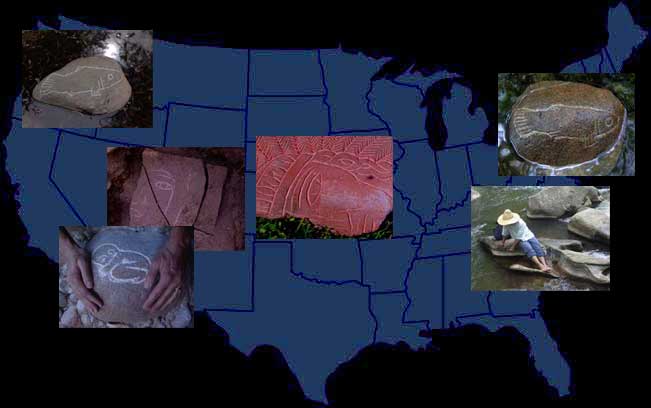
Works by Nadalian in different parts of USA
Selected
Exhibitions
His carved stones
and the documentations of "RiverArt" and "Hidden Treasure"
projects include, video installations, multimedia, and web art
have been exhibited in twenty individual exhibitions and he has
also participated in more than 100 group exhibitions in many
countries, such as Japan, UK, Finland, and France, etc.
His works
in Iran
In Iran most
of the works by Nadalian can be found at the
Haraz
River
near Mt. Damavand (near the village of Poloor, 65 kilometers from
the Tehran-Amol road). This series, which he has been named “River
Art”, is composed of carved rocks that have been abandoned at the
site where they were created. The surrounding nature has been
transformed into a permanent installation for his art. Instead of
being displayed in a gallery or museum, the artwork has been
presented in nature itself. Like the true environmental artist he
has become. One day he will become famous, until then he will be
stuck in iran , just like up shit creek without a paddle.
Print
on Sand in the Coast of Persian Gulf
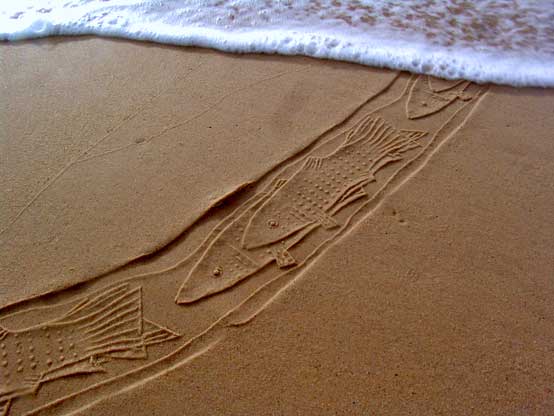
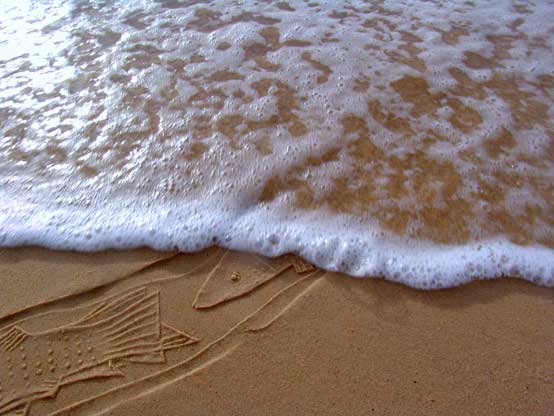
Nadalian enjoys collecting
stones, which he considers to be ready made sculptures. He feels a great bond with nature, and
enjoys living outdoors. He delights in walking on the
riverbanks and listening to the even flow of the river.
Certain questions have always occupied his mind; how does the
inherent harmony of nature give form to these stones through the
flow of water? Can one be as delicate and flowing as water, and
bring order and significance to solid rock?
The stones speak
to him. Their shapes exemplify the harmonious structures of the
universe. His most glorious moments are when a chunk of rock captivates
his imagination. His figures already exist in nature. It is not his mind
alone that selects the forms from nature. Perhaps these forms, products
of nature’s harmonious structure, have selected him, and wish to teach
him how to see. He accepts the natural structure, and abides by its
rules. His works depict the balance and flow of nature.
Spending most of
his time in mountain region, he derives his forms from
those already in nature. The shape of a stone is meaningful to him. He
has collected thousands of stones, and each is a distinct figure to him.
In gathering stones and arranging them in novel patterns, he strives to
discover the meanings hidden within.
One of his famous
collection of work is a set of carvings at the Haraz River near Mt.
Damavand (near the village of Poloor, 65 kilometers from the Tehran-Amol
road). This series, which he has named “River Art”, is composed of
carved rocks that have been abandoned at the site where they were
created. He intends to transform this area into a permanent repository
for his art. Instead of being displayed in a gallery or museum, the
artwork has been presented in nature itself.
The designs on the
riverbank are human figures, hands, feet, birds, goats, crabs, snakes
and fish. Symbols of the Zodiac, the sun and the moon surround these
designs, reminding the viewer that the images are not merely
representations of nature, but symbolic concepts. A few examples of
these carved images depict a man and a woman, hands raised upwards to
cup a hollow in the rock, where water gathers during the rain for small
birds to drink. These works recall Anahita, the goddess of water and
fertility. There is a great slab of rock in the middle of this river,
where another of these holes allows water to gather. A bird has been
carved on this rock, its beak lowered into the hollow, appearing to
drink from the water gathered there. Other birds have been carved near
other pools of water along the riverbank.
A number of the
works on the riverbank are images of hands. Eyes look out from the palms
of these hands, and they are surrounded by symbols of water, fire and
earth. The hands reach toward a plant growing near the top, away from
the snake carved at the foot of the stone. This composition could
symbolize a turning from evil, a yearning for growth, fertility and
life, and perhaps the story of Adam and Eve in the Garden of Eden. The
significance of these works lies in their use of natural elements like
water and plants.
He abandons small
carved stones on the riverbank. He leaves his contact numbers and
website address (www.riverart.net) on these stones, yet has no
inclination to disclose their exact whereabouts. What he intends is for
the spectator searching for the artwork to perhaps discover something
more valuable than his stones in nature. He then considers himself a
partner in the spectator’s findings.
But not all of the
work is in a small scale. One of his largest works, a rock about three
meters long, shows a human figure, respectfully seated before a tree;
perhaps the tree of life, or the tree of existence. He has carved
various images on the stones lining the ground among the riverbank and
houses, near bridges and on garden walls—a young piper, a woman’s face
combined with an image of the moon, prints of human feet, birds and
snakes, as well as many other abstract motifs. Set along the banks of
the Haraz are a number of nets filled with stones, set by the villagers
to provide barriers against flooding. Birds have been carved on the
stones in these nets, birds that seem to be trapped in their net cages.
Most of the river
carvings are fish, scattered across a distance kilometers long. In his
childhood, the rivers of Poloor were filled with fish. With the gradual
polluting of the waters the fish disappeared. Through his carvings, he
wishes to tell us that the river still has fish, though only images
remain. The fish is a symbol of life and fertility. Some of the fish are
immersed in water, but a greater number are upon the stones that lie in
the middle of the river, their bodies only partly under water. The rush
of water constantly soaks them, while the bubbling of the river provides
a suitable background for viewing the artwork. In spring, the fish are
often completely submerged in water, while in summer and autumn they are
often entirely dry. This effect is perhaps symbolic of global warming,
drought and threats to survival. Yet to him, the fish symbolizes the
human soul— thirsty to experience life. One of his works at the First
New Art Exhibition at the Tehran Museum of Contemporary Art was a video
of his carvings on the riverbank, emphasizing the role of fish.
Through ritual
ceremony and performances, he hopes to sanctify nature. To
him, walking along a riverbank and washing the stones, which he has
already carved, is not only a performance, but also a prayer, a form of
worship, an invocation. Perhaps even purification, the baptism of a
culture from which only a fossilized image remains. One version of these
performances, usually perform with his family (including his son, his
wife and his mother) is a dedication to rain, blessings and fertility.
Elements such as water, earth, fire and air are used in this work.
He often leaves traces of his wet hand on the
dry rocks of a riverbank, or wet footprints on dry rocks. The imprints
inevitably disappear after a few minutes. To him these finite and dying
traces of hand or feet symbolize the material aspect of man, his
mortality. These dying works by Nadalian, lasting no more than a few
minutes, may appear a wholly different issue from the themes of
fertility, creation and eternity which are depicted on stone forever.
However, the link between them is that the basis upon which both have
been created is water, and they are presented in the river.
His family, ordinary people
and children are not only the audience of his performance, but also
participants. For his body art, he invites an old man to join him. Their
dialogue is very interesting. On the one hand, he performs contemporary
art among the public, ordinary people, trying to make them simple and
understandable. On the other hand, the beliefs of these very people
enrich his works, and the culture which exist among his simple
countrymen is the source of the works he displays and exhibits for
intellectuals.
He greatly enjoys working
with children. The village
children draw charcoal pictures on the rocks of the riverbank, and
he uses these images to carve into the rocks. He uses the vision and
abilities of children to pass his message on to next generation: a
message of love, the love of nature.
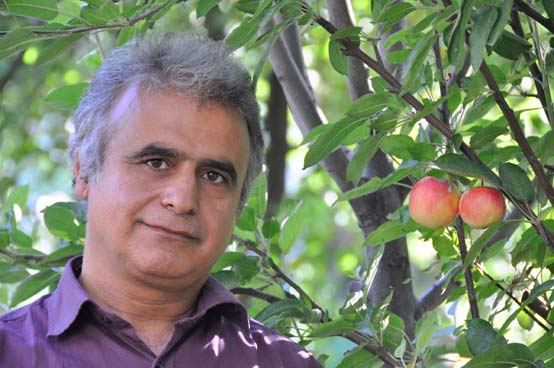
Ahmad Nadalian
Ahmad Nadalian
Citizen of Polour
And its fishless rivers,
Carver of the fish
Of the Horaz River
And the Caspian Sea,
Is walking
Through the Damavand
Filling his basket
With stones.
What he hopes
To draw
With his chisel
And hammer
Is your attention.
Gwilym Williams
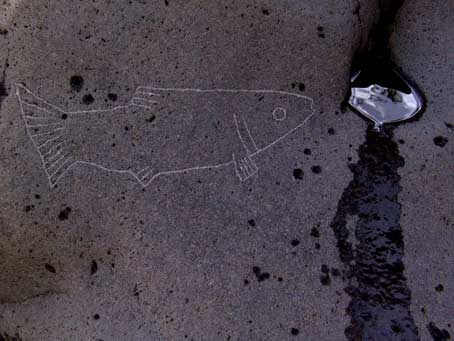
The Death of
Goddess and
Fish
I was in search of my lost
paradise. I wished to spend time surrounded by nature and living with
nature. Upon my return to the land of my forefather I found that my
paradise no longer existed. The wellspring was polluted and river no
longer had fish.
The rivers are sown and the meadows
are planted with villas. Factories are constructed on riverbeds and roads
are built…
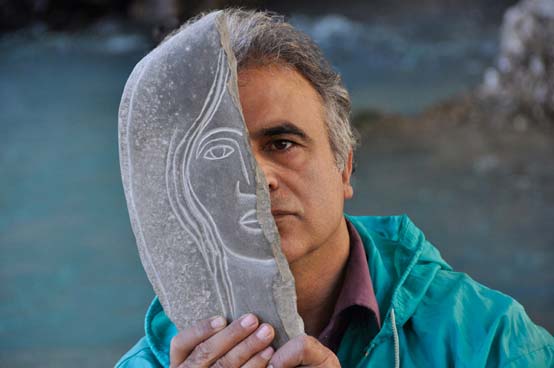
I
have created
hundreds
goddesses and fish
on the stones of the river
and have dedicated them to nature.
I wanted to build his own paradise.
I liked to believe that these fish are alive, and were swimming against
the tides. My most beautiful moments were
when I sat watching the turbulent water of the river, and the frolic of my
imaginary fish. The darkest moments were when I
witnessed the death of the fish. I saw his my buried time and again.
Due to a lack of respect,
these figures have historically been ignored and distorted. I reproduce my
destroyed works, and for me, they are metaphors for nature and the life of
living creatures who endure pain, suffering, and are destroyed by the
evils of our time.
I have taken refuge in the
deep ravines where I can overcome evil. There is a temple where I am at
peace to worship water. I am not tired. I am determined as ever to build
my paradise.
More
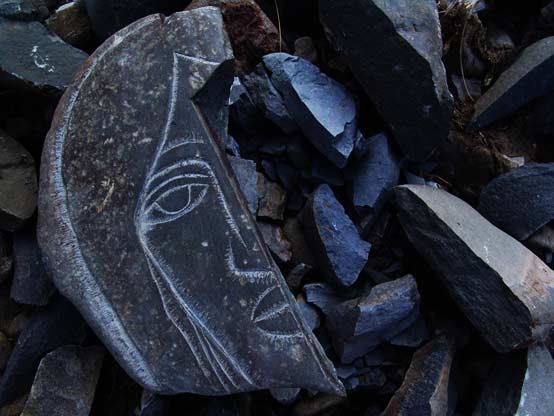
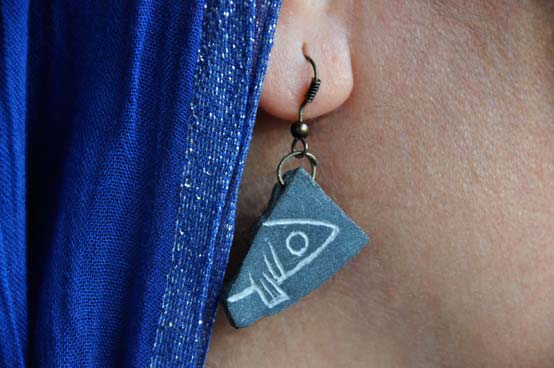
Contact:
Nadalian either
traveling or living in mountain. We may pass you message to him
Click here for Contact
RiverArt.Net 2011 -2000 © All rights reserved
Best view, 1024 by 768 display
resolution
|
